(Download)
Governors continue to prioritize strengthening states’ and territories’ healthcare workforces. The National Governors Association Center for Best Practices (the NGA Center) has supported states and territories on their Governors’ healthcare workforce priorities through the Next Generation of the Healthcare Workforce Knowledge Exchange Network (Network) since 2022. During year two of the project, 22 states and territories participated in a variety of activities including four convenings, limited access resources and targeted technical assistance. To facilitate peer-to-peer learning and discussion of regional policy needs, the NGA Center held three healthcare workforce regional workshops as well as a Healthcare Workforce Summit in Broomfield, Colorado, to bring together all Network teams. The summit was co-organized by the Colorado state project team and featured NGA Vice Chair Colorado Governor Jared Polis and Colorado Lieutenant Governor Dianne Primavera, as well as national policy experts on healthcare workforce planning and development.
Other highlights from the past year of the project include the expansion of the healthcare workforce toolkit, adding additional resources and expanding its reach from project states and territories only to a publicly available resource for all states and territories to use in their healthcare workforce planning. The NGA Center also responded to over 20 technical assistance requests from project states and territories.
Other outcomes related to the project include:
- The Michigan Department of Health and Human Services (MDHHS) allocated funds for both the behavioral health loan repayment program and behavioral health internship stipend program in the fiscal year 2023 budget. These programs support college students studying behavioral health, counseling, psychology, psychiatric nursing or social work. The MDHHS used information gathered by the NGA Center to develop the two programs, saving the department months of effort.
- The Wyoming Department of Workforce Services offered a new WyHealthTrain grant supported by American Rescue Plan Act (ARPA) funds. This grant program provides up to $10,000 in financial support for University of Wyoming or Wyoming Community College students enrolled in certain health care training programs such as nursing and behavioral health pathways. The focus of the grant emerged from Wyoming’s participation in NGA’s Next Generation of the Healthcare Workforce Learning Collaborative in 2022.
- The NGA Center forged cross-agency partnerships in several states, including connections between health agencies and state workforce development boards.
- The NGA Center fostered connections among HRSA regional offices and the states.
- The NGA Center supported peer learning and networking to facilitate connections about topics such as the healthcare workforce pipeline and the behavioral health workforce.
The NGA Center launched a policy academy in February 2024 to continue advancements for the future of the healthcare workforce. Through this policy academy, the NGA Center is supporting four states and territories in strategic planning for healthcare workforce needs.
“The National Governor’s Association Healthcare Workforce Regional Workshops resulted in new and strengthened partnerships between HRSA Regional Offices and state health workforce stakeholders, allowing states to increase their awareness of the breadth of health workforce programs and technical assistance HRSA offers. Continued partnerships and joint initiatives have flourished as a result of these workshops. HRSA regional offices appreciate NGA’s commitment to supporting states’ capacity to address healthcare workforce challenges.”
CDR Sharyl Trail, Health Resources and Services Administration
BACKGROUND
The NGA Center launched the Next Generation of the Healthcare Workforce project in 2022 to support Governors with their healthcare workforce priorities. The healthcare workforce is facing shortages and distribution challenges across the country, impacting access to healthcare. The workforce shortages have been exacerbated by healthcare provider burnout and trauma experienced by healthcare workers due to the COVID-19 pandemic, and the situation is projected to get worse over time as the population ages and healthcare services are in higher demand. For example, the Health Resources and Services Administration (HRSA) projects a shortage of 139,940 physicians in the U.S. by 2036, including 68,020 primary care physicians. HRSA also estimates the demand for direct care workers will grow by 41% by 2036. These healthcare workforce shortages also vary regionally, with non-metro areas experiencing more severe shortages than metro areas for most sectors.
In response to this situation, the NGA Center launched the Next Generation of the Healthcare Workforce project with support and funding from HRSA. In year one, there were two levels of participation. Four states, California, Colorado, Missouri and Wyoming, participated in a Learning Collaborative that focused on an in-depth action planning and technical assistance process. The Learning Collaborative supported the states in prioritizing healthcare workforce goals and making progress on these goals. For instance, Wyoming’s participation in the Learning Collaborative contributed to the formation of the new WyHealthTrain grant from the Wyoming Department of Workforce Services and supported by ARPA funds. This grant program provides up to $10,000 in financial support for University of Wyoming or Wyoming Community College students enrolled in certain health care training programs such as nursing and behavioral health pathways.
In the same year, 16 states participated in the Knowledge Exchange Network (Network) wherein they received access to a healthcare workforce toolkit, received invitations to project webinars and joined the virtual kick-off meeting and in-person convening held with the full network group to share best practices. In addition to the four Learning Collaborative states, the following states joined them for year one as part of the Network: Alabama, Connecticut, Minnesota, North Carolina, Ohio, Oklahoma, Oregon, Rhode Island, South Carolina, Utah, West Virginia and Wisconsin. For more information on year one outcomes, read Preparing the Next Generation of the Healthcare Workforce: State Strategies for Recruitment and Retention.
In year two of the project, the Network expanded from 16 to 22 states and territories. The new states and territories added to the project this second year were: American Samoa, Illinois, Kentucky, Maine, Michigan and New Jersey. Project activities included webinars featuring subject matter experts and in-person convenings to foster peer-to-peer learning and connection to national policy experts and data from HRSA. The NGA Center held three regional workshops to facilitate discussions with the Eastern, Central and Western states in the project. The NGA Center also hosted a Healthcare Workforce Summit in Broomfield, Colorado, to bring all project states and territories together to continue peer discussion, hear from Colorado leaders and external healthcare workforce policy experts, and to support team action planning. The NGA Center also produced healthcare workforce resources including a toolkit and custom technical assistance for participating states and territories throughout the year, in addition to a weekly Healthcare Workforce Digest newsletter with information on relevant events and resources from NGA and other organizations.
“The WyHealthTrain highlights the ability of Wyoming’s state government and local institutions to work together to advance the governor’s – as well as the National Governors Association’s – goal of increasing a trained workforce in the state’s healthcare and behavioral health industries.”
Holly McKamey Simoni, Workforce Programs Administrator, Wyoming Department of Workforce Services
Regional Workshops
East Regional Workshop | Washington DC | May 24-25, 2023
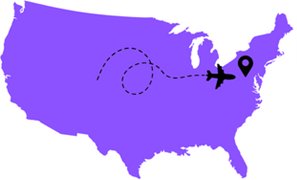
Workshop Participants: Alabama, Connecticut, Maine, New Jersey, North Carolina, Rhode Island, and South Carolina.
Agenda Highlights: Licensure Compacts, Behavioral Health Workforce, and Recruitment Strategies.
Experts and Partners Attending: Boston Consulting Group, Council of State Governments, and Virginia Hospital & Healthcare Association.
Top Themes: Career pathways with stackable credentials; Nursing; Behavioral health; and Workforce development strategies.
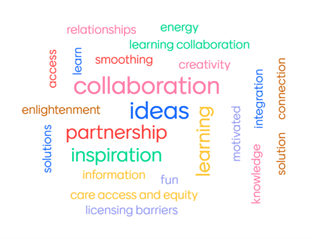
What did East participants expect from the event?
Before the event, what did participants hope to experience at the workshop?
At the kickoff of each regional workshop event, attendees were asked to share one word as to what they expected from the meeting. The word cloud represents participants’ feedback to this inquiry, with the larger words indicating the most common responses among participants. East participants most commonly reported collaboration, ideas and partnership as their top expectations from the event.
Agenda Highlights from Subject Matter Experts and NGA Partners
Sessions at the event included a review of state partnerships with consultants to identify state healthcare workforce challenges and work with stakeholders to develop collaborative solutions, specifically related to youth behavioral health workforce, nursing and childcare shortages. Attendees also learned from the Council of State Governments about licensure compacts, including available compacts in the healthcare space and considerations for state participation. Finally, attendees heard a presentation on “Earn While You Learn” programs established by healthcare employers to support nursing students serving in nursing assistant roles during their clinical training.
Themes From State Discussion and Planning
During the workshop, participants engaged in peer learning and discussion around their interest in developing career pathways that incorporate a series of sequential trainings and credentials, providing various opportunities for employment at each stage of the pathway.
The top healthcare workforce categories of interest among East participants were nursing and behavioral health; participants stated that these professions represent the top demand in their region.
For nursing, in particular, states were interested in the role that state nursing boards could play to remove barriers to licensure and support workforce expansion, such as modifying nursing education program rule language to allow more people to receive education and training.
For behavioral health, states cited interest in resolving widespread shortages and developing career pathways within the behavioral health field. Finally, participants cited interest in expansion of workforce development strategies to support recruitment into the healthcare sector and providing upskilling opportunities to current workers.
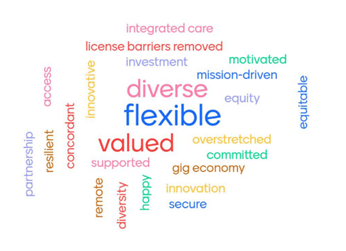
Visioning: Next Generation of the Healthcare Workforce
After the event, what did participants see as the vision for the next generation of the healthcare workforce in their state?
In addition to the word cloud developed at the kickoff of the East regional workshop, participants were asked at the end of the meeting to share what they saw as the vision for the next generation of the healthcare workforce. Participants at the East workshop most commonly cited that they saw the next generation of the healthcare workforce to be diverse, flexible and valued.
What did East workshop participants share as their next steps?
To achieve the vision for their state’s healthcare workforce, many participating states reported plans to engage new partners (such as chambers of commerce, career and technical education and labor/workforce development perspectives) to develop collaborative healthcare workforce development strategies. Several participants indicated interest in enhancing healthcare workforce data available for planning or better leveraging the data that currently exists to improve understanding of their state’s current healthcare workforce landscape.
Licensing Compact and CSG presentation Top Themes
During the East Regional Workshop, Adam Diersing, Senior Policy Analyst at the Council of State Governments National Center for Interstate Compacts, provided an overview of licensure compacts and other portability options for states. His presentation included a review of existing compacts, characteristics associated with licensure compacts and considerations for states.
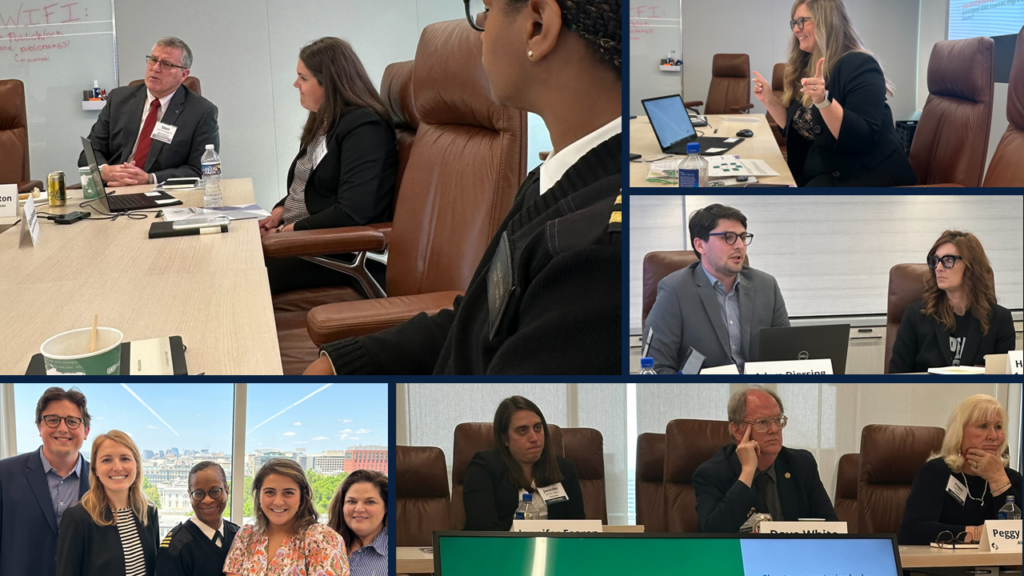
West Regional Workshop | Jackson Hole, WY | June 6-7, 2023
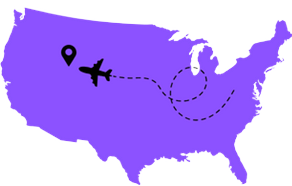
Workshop Participants: American Samoa, California, Colorado, Oklahoma, Oregon, Utah, and Wyoming.
Agenda Highlights: Reviewing and enhancing state health workforce regulation; Using data to inform state higher education decisions; State Recruitment Strategies; and Partnerships with philanthropy to achieve state goals.
Experts and Partners Attending: Utah Office of Professional Licensure Review; Western Interstate Commission for Higher Education; Hughes Charitable Foundation (Wyoming); and St. John’s Health (Hospital in Wyoming).
Top Themes: Healthcare workforce data; Cross-government coordination; and Regulatory review.
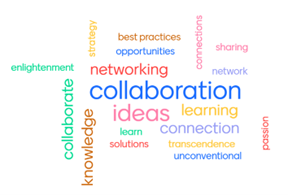
What did West participants expect from the event?
Before the event, what did participants hope to experience at the workshop?
West participants most commonly reported that they anticipated collaboration, ideas and learning from the West regional workshop event.
Workshop Agenda Highlights from Subject Matter Experts and NGA Partners
NGA worked with the Wyoming team as the host state for the West Regional Workshop. The team provided insights on rural healthcare workforce issues and strategies used in Wyoming to recruit and retain the healthcare workforce, such as state agency and charitable organization partnerships. The Wyoming project team shared the success of their recent statewide recruitment initiative, WY Relocate, to entice professionals to relocate or move back to Wyoming for work. The Wyoming project team was able to harness this innovation and gear a piece of it toward recruiting healthcare workers into the state. Participants from a local philanthropic organization and the Wyoming Governor’s health and human services advisor discussed a state-philanthropy partnership to advance state healthcare workforce goals. Lastly, partners from the Jackson Hole healthcare community discussed methods to support healthcare workers including a local hospital system’s effort to provide affordable housing for nurses and other healthcare workers and a former mayor’s work on the value of mindfulness training for healthcare and other frontline and first responders in the community.
The West workshop also highlighted Utah’s innovation in state regulatory review asthe legislature established an office within the state licensing department tasked with reviewing occupational regulation and making recommendations for enhancement. The Office of Professional Licensure Review draws on data from Utah’s Cross Profession Minimum Data Set developed by the state’s Health Workforce Advisory Council. This workshop also featured a guest speaker from Western Interstate Commission for Higher Education (WICHE) to discuss trends in high school graduation and college enrollment, a recent study conducted on nursing education challenges and regional healthcare education opportunities available through WICHE.
Themes From Discussion and Planning
During the workshop, participants discussed their needs to prioritize recruitment and ensure students trained within their jurisdiction are retained and decide to stay local to practice. Participants also identified that their healthcare workforce challenges are expansive, and that it is a challenge to prioritize among the issues to identify targeted opportunities for investments and programming.
During the workshop, participants identified an interest in replicating successes shared through peer learning, including: recruitment and messaging strategies, career pathway development and opportunities for innovation in regulation.
Visioning: Next Generation of the Healthcare Workforce
What did West workshop participants share as their next steps?
Participants indicated that when they returned to their states, they were interested in investing in healthcare workforce data and analysis to better understand their top healthcare workforce issues and begin prioritizing among various initiatives and developing metrics to measure success. Some participants identified interest in engaging additional stakeholders and perspectives to develop collaborative solutions.
The meeting closed with asking participants to develop “headlines” for one to five years in the future that would highlight their work after the regional meeting. Below are examples of participant submissions:
- Grow our own, keep our own.
- Build your career here! Our state knows rural!
- Thriving together.
St. John’s Health Innovative Approach to Housing
Thom Kinney, CEO of St. John’s Health in Jackson Hole, Wyoming discussed the impact of housing costs on workforce recruitment and retention within the hospital. Nurses, physicians and other health professionals have been priced out of the housing market making it challenging to recruit and retain a workforce. The CEO himself reported that he “drives in from Idaho, where housing is more affordable.” He shared information about the hospital’s Hitching Post Workforce Housing Redevelopment Project which aims to address healthcare workforce housing challenges. This large-scale project required a local referendum to repurpose land and increase local sales tax to support a new housing development project for the hospital that will provide short- and long-term affordable housing for in demand healthcare workers.
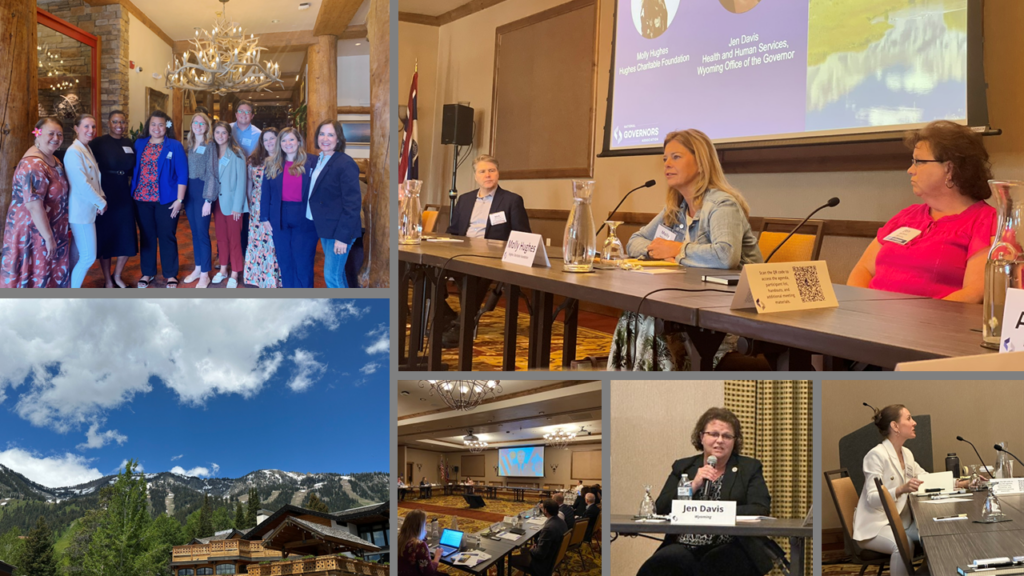
Central Regional Workshop | Chicago, IL | July 27-28, 2023
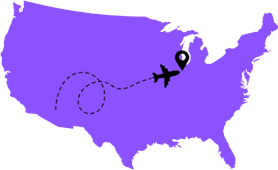
Workshop Participants: Illinois, Michigan, Minnesota, Missouri, West Virginia, and Wisconsin.
Agenda Highlights: Long-term care staffing shortages; Pediatric health workforce; and Early pipeline strategies for workforce development.
Experts and Partners Attending: Lurie Children’s Hospital of Chicago, Deloitte Consulting, and Illinois Department of Healthcare and Family Services.
Top Themes: Early pipeline engagement; Behavioral health; State policy and program coordination; Data-driven decisions; and Maximizing funding.
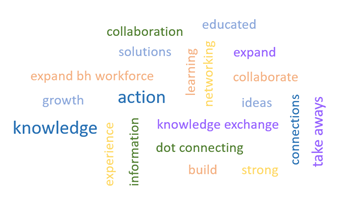
What did Central participants expect from the event?
Before the event, what did participants hope to experience at the workshop?
Central workshop participants most commonly reported that they anticipated knowledge and action from the event.
Workshop Agenda Highlights from Subject Matter Experts and NGA Partners
The Central meeting focused on innovative workforce development approaches for the healthcare workforce and explored concepts for what the workforce of the future would look like. Representatives from the Ann & Robert Lurie Children’s Hospital of Chicago discussed pediatric healthcare workforce challenges and described their innovative Mentorship and Workforce Development programs. Representatives from Deloitte spoke about preparing for the healthcare workforce of the future and trends associated with healthcare workforce employment and demand. HRSA Region 5 Administrator, CDR Sharyl Trail, shared her lived experience as a behavioral healthcare provider in rural and tribal areas and provided insights on how state project teams can work with the HRSA regional offices as they engage in strategic planning for building the healthcare workforce in their states. State teams engaged in peer-to-peer discussions on data and planning, future goals, and shared best practices.
Workshop Agenda Highlights from Subject Matter Experts and NGA Partners
The Central meeting focused on innovative workforce development approaches for the healthcare workforce and explored concepts for what the workforce of the future would look like. Representatives from the Ann & Robert Lurie Children’s Hospital of Chicago discussed pediatric healthcare workforce challenges and described their innovative Mentorship and Workforce Development programs. Representatives from Deloitte spoke about preparing for the healthcare workforce of the future and trends associated with healthcare workforce employment and demand. HRSA Region 5 Administrator, CDR Sharyl Trail, shared her lived experience as a behavioral healthcare provider in rural and tribal areas and provided insights on how state project teams can work with the HRSA regional offices as they engage in strategic planning for building the healthcare workforce in their states. State teams engaged in peer-to-peer discussions on data and planning, future goals, and shared best practices.
Themes From Workshop Discussion and Planning
Participants highlighted the gross shortages of healthcare professionals in their states and the need to determine whether shortages are general or in specific communities (such as rural areas), professions or settings. Some states were focused more on behavioral health, while others were focused on long-term care. A top priority among participants was to address shortages through healthcare workforce development, funding and legislative and executive leadership support. Many states identified a need for strategic planning to understand the current landscape and begin to identify and address top priorities.
Visioning: Next Generation of the Healthcare Workforce
What did Central workshop participants share as their next steps?
Several states identified the need for strategic engagement of key perspectives, both within the state government (executive and legislative branches) and among external stakeholders, to begin formal state planning. States agreed improvements in gathering and using healthcare workforce data were needed to inform planning and the development of funding requests. States identified behavioral health, long-term care and rural workforces as top priorities for career pathway development and general recruitment and growth, including through early pipeline engagement and funding allocation.
The meeting again closed with participants developing “headlines” for one to five years in the future that would highlight their work after the regional meeting. Below are examples of participant submissions:
- [The state] launches comprehensive healthcare workforce data collection system
- The Office of Workforce Development transforms the healthcare workforce pipeline
Ann & Robert Lurie Children’s Hospital
Through NGA’s partnership with the Children’s Hospital Association, leadership from Ann & Robert H. Lurie Children’s Hospital of Chicago briefed state participants at the Central meeting on their innovative strategies to support healthcare workforce development across the continuum of health professions. The hospital has a suite of workforce development and mentorship programs ranging from career exploration initiatives for middle school to more formal internships and immersive camp experiences for late high school students. These programs benefit the organization through direct workforce development and support early pipeline healthcare workforce development goals of the state. Initiatives include Discovering Healthcare Careers, a six-week paid internship program providing professional development and basic clinical skills to Latino and Black high school students.
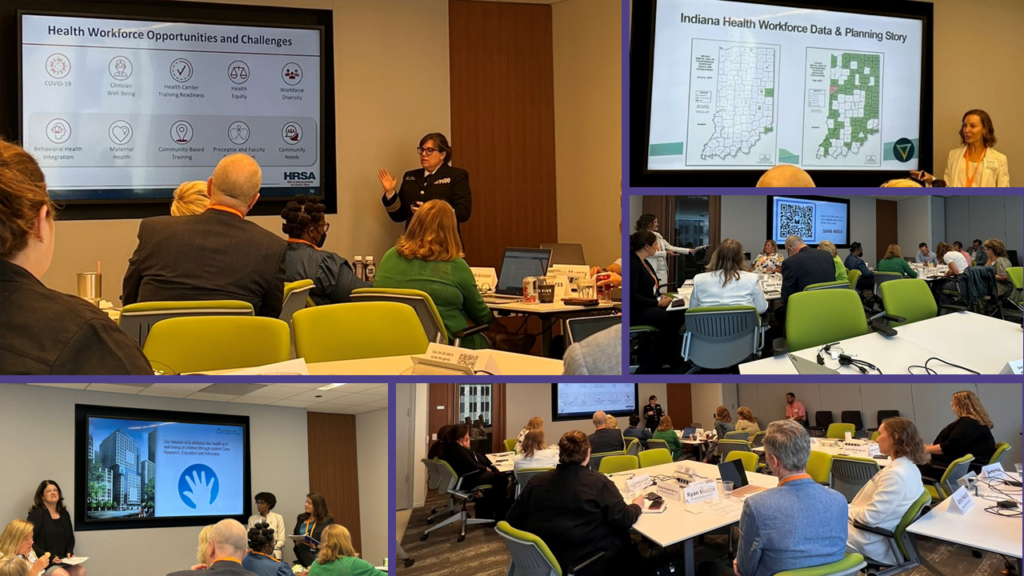

Healthcare Workforce Summit 2023
Event Highlights: 18 states or jurisdictions represented; 90 total attendees; 8 states attended drop-in technical assistance sessions.
The NGA Center held a three-day Healthcare Workforce Summit August 24-27, 2023, in Broomfield, Colorado, to bring together 18 of the 24 states and territories participating in the Next Generation of the Healthcare Workforce Project. The summit provided participating states with an opportunity to share their progress during the project and hear from healthcare workforce subject matter policy experts. The Colorado state project team served as a co-organizer for the summit and brought many experts from the state to participate in the event.
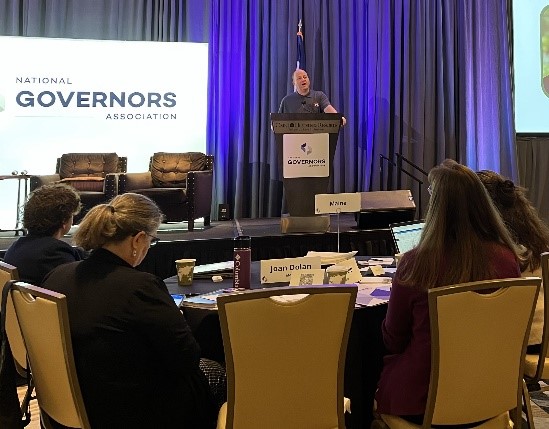
The agenda for the summit was crafted in direct response to technical assistance and additional information requests received from participating states throughout the course of the project, as well as from the regional workshops. The summit kicked off with welcome remarks from the NGA Vice Chair Colorado Governor Jared Polis, he highlighted investments made throughout Colorado to support the healthcare workforce. Colorado Lieutenant Governor Dianne Primavera highlighted Colorado’s investments while moderating a panel on the intersections of aging and disability with healthcare workforce needs.
Topical highlights from the agenda include:
- WorkforceRx: Levers for Growing the Healthcare Workforce
- Insights from HRSA on Healthcare Workforce
- Captain Alicia Souvignier from the Health Resources and Services Administration (HRSA) highlighted healthcare workforce supports and resources available to states and territories through regional offices.
- Healthcare Workforce in the Global Economy: A Comparative Perspective
- Supporting the Direct Care Workforce
- The Intersections of Aging and Disability on Healthcare Workforce Needs
- Lieutenant Governor Primavera led a session on the intersections of aging and disability on healthcare workforce needs, highlighting Colorado’s critical investments to support these vulnerable populations. Lieutenant Governor Primavera moderated the session with members of her staff and shared information about Colorado’s plan to support the healthcare workforce through the lenses of age and disability.
- Behavioral Health Workforce
- Participants engaged in a peer-to-peer learning session, with panelists from Colorado, Oregon and Rhode Island sharing ways to align behavioral health workforce priorities. The session drew from Lieutenant Governor Primavera’s panel and talked about specific behavioral health barriers for an aging healthcare workforce.
- Cross-Profession Healthcare Workforce Data
- Director of the Health Access Branch and Director the Primary Care Office in the Colorado Department of Public Health and Environment; Ashley Moretz, Director of the Office of Primary Care and Rural Health in the Utah Department of Health and Human Services (UDHHS); and Kendyl Brockman, Health Workforce Policy Analyst with UDHHS, discussed how their states are using data to support health workforce planning.
- Utilizing Alternative Pathways to Address Long-Term Care Staffing Shortages
- Engaging and Leveraging Innovative State, Local and Tribal Partners
- Lessons Learned from Missouri’s Workforce Engagement Model
- State of the Nursing Workforce
- Energy Resilience and Healthcare Infrastructure
- Wellness and Resilience for Healthcare Workers
- Dr. Curt Drennen, Branch Chief at the Disaster Behavioral Health and Community Recovery office in the Colorado Department of Human Services, and Michael Neustedter, Partnerships and Recruitment Director at First Descents, shared their innovative work to promote wellness and resilience for the healthcare workforce.
Custom State Learning and Planning
The Summit agenda included various opportunities for participants to meet with their state team and engage in peer-to-peer learning with team members from other states and territories. A facilitation guide was prepared in advance of the meeting, customized for each state/territory to encourage state-specific reflection, discussion and strategic planning. This facilitation guide was coined the “Summit Orienteering Guide” and included the following information:
- A summary of the state/territory team members’ feedback obtained during the regional workshops
- State/territory healthcare workforce development opportunities (including a review of the field strength of HRSA-participating awardees in their state and directing states to the Field Strength Dashboards, State Fact Sheets and the resources available through regional HRSA offices)
- A review of the available health-related licensure compacts and their state’s/territory’s participation in each
- Data on the direct care workforce
- Summary of their state’s/territory’s regulatory requirements for various behavioral health workforce roles compared to the national average
- Nursing workforce landscape, nationally and within the participant’s state/territory
- Healthcare workforce data collection resources, including providing information made available by the Health Workforce Technical Assistance Center related to data collection during license renewal, a summary of the state’s/territory’s current data collection efforts and identification of any authorizing statute that enables data collection
- State/territory licensing/regulatory model, including customized information with state/territory specific model(s)
- Details on a new Cross-Profession Minimum Data Set tool to support states and territories in capturing data to support state planning
Each section within the State Orienteering Guide included a QR code that directed participants to the targeted section on the NGA State Healthcare Workforce Toolkit so they could learn more and access direct links to case examples.
From Planning-to-Action: State Priorities
The Summit Orienteering Guide was accompanied by the Trail Map from Topics to Tactics, a document to support guided reflection, peer discussion and strategic planning. This map also contained questions for individual and state/territory team reflection. At the end of the Summit, teams worked together to complete the final page in the Trail Map: Moving from Topics to Tangible Tactics. This included space for identification of high impact, high feasibility activities that the state or territory planned to focus on after the Summit and in year three of the project. State and territory teams each presented their future activities and topics.
Below are themes identified from these state and territory plans:
- State and Territory Healthcare Workforce Planning Infrastructure Development: State and territory priorities related to healthcare workforce planning infrastructure included three important components: healthcare workforce data, formalization of stakeholders and a review of funding.
- Data: Several states prioritized strengthening healthcare workforce data collection or analysis mechanisms to ensure planning efforts are data-centered. Some states were interested in engaging executive branch entities to identify disparate data sources and formalize data sharing agreements and governance strategies.
- Stakeholder Engagement and Formalization: Formalization of healthcare workforce planning through the establishment of a council or commission was another top priority; relatedly, broader stakeholder engagement (inter-agency, with the legislature and with external stakeholders) was prioritized.
- Funding Review: Some states plan to conduct a review of state appropriations and funding opportunities supporting healthcare workforce activities.
- Applying the Workforce Development Lens to the Health Sector: Many states and territories identified plans to identify apprenticeable occupations or short-term credentials in the health sector. Additionally, the promotion of careers in healthcare (including both shorter-term credential occupations and professional roles) was a strategic priority. Some states focused on early pipeline promotion (through Area Health Education Centers) while others focused on long-term credentials through publishable materials or a website and developing stackable credential pathways within the health sector (specifically focusing on nursing and behavioral health).
- Nursing, Behavioral Health and Direct Care Workforce Development: Although the previous themes also generally apply to these professions (as a part of the workforce broadly), enough states identified prioritizing one or more of these professional areas that they were distinguished separately.
- Nursing: Nursing priorities tended to focus on the development and promotion of career pathways from entry-level nursing assistants to registered nursing, pipeline and opportunities for regulatory innovations, addressing nursing faculty shortages and limitations, and supporting clinical training infrastructure.
- Behavioral Health: State and territory priorities related to the behavioral health workforce included a focus on career pathways (e.g., pathways from peer support roles to licensed behavioral health counseling), occupational regulation review, and providing mental health and trauma-informed care services to healthcare professionals (with the aim to reduce substance use disorder, the effects of trauma experienced on the job and burnout).
- Direct Care: Direct care priorities varied by state; some prioritized a study of the supply and demand of nurses in these settings, while others focused more on the direct care workforce challenges.
The themes identified by states and territories will influence the focus areas and resources for year three of the project that kicks off in 2024.
ADDITIONAL RESOURCES
In addition to in-person convenings, the NGA Center provided support to states and territories in several formats including technical assistance, a healthcare workforce resource toolkit and a regular weekly Healthcare Workforce Digest newsletter.
Technical Assistance: The NGA Center continued providing technical assistance to states and territories in the Knowledge Exchange Network through the preparation of custom research memoranda and by facilitating peer-to-peer and subject matter expert connections or engagements. States and territories requested support on a wide range of topics, the most common of which included:
- The evidence behind recruitment and retention initiatives; states and territories are interested in understanding the outcomes from various recruitment and retention efforts to identify programs to invest in and expand to scale or maximize for impact.
- Best practices for healthcare workforce initiative governance; this includes information on new state or territory positions or mechanisms to coordinate these efforts, such as advisory councils, boards and task forces. States and territories continue to have an interest in mechanisms that could help them coordinate planning for healthcare workforce challenges across agencies, branches of government and with local stakeholders.
- Information on healthcare workforce education loan repayment programs. The Michigan Department of Health and Human Services (MDHHS) used loan repayment program information gathered by the NGA Center to develop two programs, saving the department months of effort. MDHHS allocated funds for both the behavioral health loan repayment program and behavioral health internship stipend program in the fiscal year 2023 budget. These programs support college students studying behavioral health, counseling, psychology, psychiatric nursing or social work.
- Guidance on peer support and paraprofessional roles (positions also called technicians or aides that do not require training at or above the masters level). States and territories are looking for guidance on recommended training, how to define these positions and whether these roles should be licensed.
- Nursing workforce strategies; this includes ways to improve and expedite the nurse licensure process, how to increase and retain nursing faculty and improving nursing workforce data collection.
- Considerations for licensure compact participation; compacts of interest include the Nurse Licensure Compact and the three behavioral health related compacts.
- How best to engage with workforce boards, including enhancing the role of the business and health employer community in healthcare workforce planning.
“The National Governors Association’s research assistance on national behavioral health loan repayment and stipend programs was extremely valuable to Michigan. The Great Lakes State appreciates having an association with expertise in workforce and with resources to assist states with staying current.”
MDHHS Director Elizabeth Hertel
Toolkit: The state healthcare workforce toolkit is a key resource available to the Network. The toolkit includes profession-specific documents, resources to support data collection and analysis, resources on licensing and regulation, and resources on training, recruitment, and retention. The NGA Center continues to build out this toolkit based on state and territory priorities, and it is now available to the public after a limited release launch to project states and territories during year two of the project. In August 2023, the NGA Center made most of the resources in this toolkit public to allow stakeholders beyond state government to leverage these documents for healthcare workforce planning efforts.
Newsletter: Each week, the Network teams receive a Healthcare Workforce Digest newsletter. This newsletter highlights new information and resources from the NGA Center and includes a calendar of upcoming project and healthcare workforce events, healthcare workforce news from around the United States, HRSA funded resources and events, and various funding opportunities open to state/territory governments or partners such as academic institutions and healthcare systems. States and territories are also encouraged to send resources to NGA staff to be featured in the newsletter. Top performing links include NGA Center events, healthcare workforce news from other organizations and HRSA-specific funding opportunities.
CONCLUSION
In year two of the Next Generation of the Healthcare Workforce project, states and territories sustained their efforts on healthcare workforce planning through individual team goals, regional dialogues, national conversations among project state and territory teams and subject matter experts, peer-to-peer engagement, connections with HRSA regional offices and expansion of their knowledge base related to various topical areas within the healthcare workforce. Project teams also engaged with state and external stakeholders including workforce boards, licensure boards, healthcare systems, philanthropic organizations, NGA partners and community stakeholders. Governor-appointed project teams continue to engage in opportunities for the development of portfolios of evidence-based solutions to solve various healthcare workforce challenges. At the close of this project year, participating states were provided with resources and support to narrow in on strategic and achievable goals to prepare for the next generation of their healthcare workforces.
In year three, the Network will include four new states and territories: Arizona, Hawai‘i, Indiana and the U.S. Virgin Islands. All 26 states and territories participating in the Network for year three will have access to new resources, technical assistance, peer-to-peer learning and engagement opportunities, a webinar series and the weekly Healthcare Workforce Digest newsletter.
The NGA Center recently launched a Healthcare Workforce Policy Academy to continue this work and look ahead toward strategic planning with a smaller group of states that have already participated in the Network. The states and territory competitively selected to participate in the Policy Academy are American Samoa, Oregon, Utah and Wyoming. The NGA Center will support these states and territory for eight months in designing, implementing and/or strengthening the state/territory strategy on recruiting and retaining the next generation of the healthcare workforce. This policy academy is an opportunity for Governors’ offices and other state officials to strengthen the response to the ongoing healthcare workforce crisis in a strategic plan or structure. States will focus on actions to bolster cross-functional healthcare workforce strategic planning in specific areas of the healthcare workforce including but not limited to behavioral health, direct care, nursing, and rural providers and could focus on resiliency and the effects of trauma on the healthcare workforce. NGA Center staff and consultants from Veritas Health Solutions will help states draft strategic plans on healthcare workforce for the short- and long-term and provide opportunities to convene cross-functional teams across state government to draft these plans. This policy academy will focus heavily on technical assistance and will feature:
- A Virtual Kick-off Meeting: Participating states and territories will attend a kick-off meeting with the NGA Center to convene the project teams and begin development of an action plan specifically tailored to the state or territory’s needs.
- Strategic Action Plan Development: Project teams will develop a strategic action plan to map potential progress and goals for the project’s duration. Project teams will meet monthly with the NGA Center to provide status reports and make updates to the action plan.
- Technical Assistance Site Visit: The NGA Center will visit each project team in their state or territory once during the duration of the project to provide on the ground technical assistance and action planning.
- Wrap-up Meeting: Project teams will attend a wrap-up meeting where they will have the opportunity to share their strategic action plan and discuss projects made in their state or territory.
Due to the high application volume to be part of the Policy Academy, the NGA Center will also work with a group of states on Accelerator Technical Assistance. This program will provide guidance and research through a virtual meeting with the NGA Center and our consultants followed by custom technical assistance to support states in achieving self-identified goals. This could include intensive research, peer-to-peer learning or several sessions with NGA Center staff and consultants to jumpstart, provide consultative review, and/or evaluate their plans and progress.
The NGA Center and Veritas Health Solutions will also conduct two studies focused on the behavioral health workforce that will support project states as they engage in strategic planning for their healthcare workforce portfolios of policy solutions in the coming year. These studies are focused on behavioral health paraprofessionals and behavioral health related licensure compacts.
Together with its supporters and partners, the NGA Center is moving the needle to strengthen the healthcare workforce of the future with states and territories, reimagining what is possible while providing solutions for today’s challenges.
ACKNOWLEDGEMENTS
The National Governors Association Center for Best Practices (NGA Center) would like to thank the Health Resources and Services Administration (HRSA) in the U.S. Department of Health and Human Services for their generous support in development of this publication under National Forum Cooperative Agreement No. U98OA09028. The contents of this publication are solely the responsibility of the authors and do not necessarily represent the official views of HRSA or the U.S. Department of Health and Human Services.
This paper was developed by Anna Heard and Dr. Shelby Hockenberry of the NGA Center for Best Practices and Hannah Maxey and Courtney Medlock of Veritas Health Solutions. The NGA Center would like to thank the state and territory officials, HRSA experts, NGA partners and other subject matter experts whose work, perspectives and expertise contributed to this publication.
Recommended Citation
Heard, A., Hockenberry, S., Maxey, H., Medlock, C. Sustaining Healthcare Workforce Planning and Development through State and Territory Engagement. Washington, DC: National Governors Association, February 2024.












